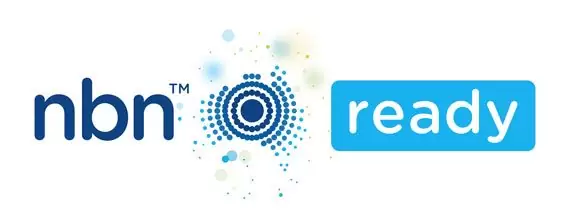How to upgrade with affordable phone systems without breaking the bank
Even though communication is a key business driver, many small and medium-sized enterprises struggle to keep up with the latest technology due to budget constraints. The good news is that upgrading your communication infrastructure to a cloud-based system doesn't have to break the bank.
Let’s explore how you can enhance your business operations with affordable phone systems, providing you with cost-effective solutions that boost efficiency and productivity.
Understanding affordable phone systems
Before diving into the specifics of upgrading, it's important to understand what we mean by budget-friendly phone systems. These are communication solutions that offer advanced features and capabilities typically associated with high-end systems but at a fraction of the cost. They leverage modern technology, such as VoIP, to provide businesses with flexible, scalable, and feature-rich phone systems without the hefty price tag.
The benefits of upgrading to cost-effective phone systems
Upgrading your outdated phone system can bring a lot of advantages to your business.
Firstly, affordable phone systems often operate over the internet, which can significantly reduce or even eliminate traditional phone line costs, leading to substantial cost savings. Secondly, these systems offer great scalability. As your business grows, it can easily accommodate new users without requiring significant infrastructure changes, making them ideal for growing businesses.
Despite their lower cost, these phone systems often include advanced features like call forwarding, voicemail-to-email, and conference calling. These features can greatly enhance your team's productivity and communication capabilities. Additionally, with features like personal assistants and call queuing, you can handle customer calls more efficiently, leading to improved customer service and satisfaction.
Many affordable phone systems also offer excellent support for remote work. They often come with mobile apps and softphones, enabling seamless communication for employees working from home or on the go. This flexibility can be a game-changer in today's increasingly remote work environment with 4 in 10 Australians working from home at least once a week in 2023.
How to choose the right phone system
Selecting the right system for your business requires careful consideration of your needs and budget. Start by assessing your needs: consider the size of your business, the number of users you'll need to support, and the specific features that are essential for your operations. Next, evaluate your budget, determining how much you can afford to spend on both initial setup and ongoing costs.
Once you have a clear understanding of your needs and budget, research various options. Look into different providers and compare their offerings, prices, and customer reviews. Pay special attention to scalability - choose a system that can grow with your business to avoid the need for another upgrade soon. Also, consider integration capabilities. Ensure the system you choose can integrate with your existing tools and software to maintain a smooth workflow.
Top phone system options
While there are many options available in the market, a few popular types of affordable phone systems are worth considering. VoIP-based systems, which operate entirely over the internet, offer a wide range of features at competitive prices. Cloud-based PBX systems provide the functionality of a traditional PBX without the need for on-premises hardware, making them an excellent choice for businesses looking to minimise physical infrastructure.
Hybrid systems, which combine elements of traditional and VoIP systems, offer a balance of reliability and advanced features. These can be particularly useful for businesses transitioning from older systems. For businesses with technical expertise, open-source solutions can be an extremely cost-effective option, offering maximum customisation possibilities.
Implementing your new affordable phone system
Once you've chosen a system, a smooth implementation is key to realising its benefits. Begin by planning the transition: decide on a timeline and communicate the upcoming changes to your team. This preparation helps ensure everyone is on board and ready for the switch.
Next, prepare your network. Ensure your internet connection and network infrastructure can support the new system. This might involve upgrading your internet service or making changes to your network configuration. Following this, provide comprehensive training to your staff. Make sure everyone understands how to use the new system effectively, as this will be crucial for maximising its benefits.
Before going live, conduct thorough testing. Test all features and functions to identify and resolve any issues. This step can prevent disruptions when you officially switch over. After implementation, continually monitor the system's performance and make adjustments as needed. This ongoing optimisation will help you get the most out of your new affordable phone system.
Maximising the value of your phone system
To get the most out of your new system, it's important to utilise all its features. Many businesses only use a fraction of their system's capabilities, missing out on potential benefits. Take the time to explore and implement all relevant features. Keep your system updated regularly to ensure you have access to the latest features and security patches.
Many affordable phone systems provide analytics capabilities. Use this data to optimise your communication processes and identify areas for improvement. Additionally, regularly collect feedback from employees and customers. Their insights can be invaluable in fine-tuning the system to better meet your business needs.
The future of affordable cloud-based phone systems
As technology continues to evolve, we can expect affordable cloud-based phone systems to become even more feature-rich and cost-effective. Emerging technologies like AI and machine learning are likely to be integrated, offering even more advanced capabilities without significantly increasing costs. These advancements could lead to more sophisticated automated customer service options, improved call routing, and more accurate voice-to-text transcription, among other benefits.
Once you’ve found the right system with the right VoIP phone price for your business, you can position your business for success in today's volatile marketplace.
FAQs
Will an affordable phone be reliable enough for my business?
Yes, most modern affordable phones are highly reliable. They often use cloud-based technology, which means your service is backed up across multiple servers. However, the reliability also depends on your internet connection. With a stable, high-speed internet connection, affordable phone systems can be just as reliable as traditional systems, if not more so.
How difficult is it to set up and manage an affordable phone system?
The complexity of setup and management varies depending on the system you choose. Cloud-based systems are generally easier to set up and manage, often requiring little more than an internet connection and some basic configuration. On-premises systems might require more technical expertise. However, most providers offer support and management tools to help you easily administer your system, even without extensive technical knowledge.
How much can I expect to save by switching to an affordable phone system?
The amount you can save varies depending on your current setup and the new system you choose. However, many businesses report savings of 30-50% on their communication costs after switching to affordable phone systems. These savings come from reduced hardware costs, lower call rates (especially for long-distance calls), and decreased maintenance expenses.



